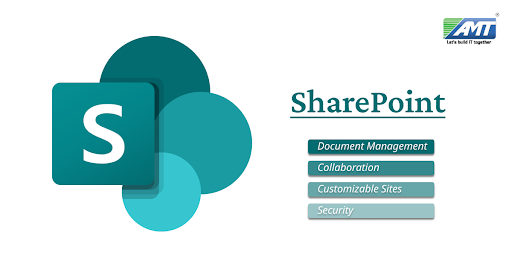SharePoint is a web-based platform developed by Microsoft that integrates with Microsoft Office. It is primarily used for document management and storage but has many other features and capabilities that make it a versatile tool for collaboration and information sharing within an organization. Here are some key aspects of SharePoint:
- Document Management: SharePoint allows organizations to create, store, organize, and manage documents in a secure and centralized location. Users can check documents in and out, track changes, and maintain version history.
- Collaboration: SharePoint provides tools for team collaboration. Users can create and edit documents together in real-time, share calendars, create task lists, and conduct discussions through SharePoint sites.
- Customizable Sites: SharePoint sites serve as customizable workspaces where teams can collaborate on projects, share information, and manage content. Sites can be tailored to meet specific team or project needs.
- Security: SharePoint offers robust security features, including access controls, permission levels, and encryption. Organizations can control who has access to specific documents and sites, ensuring data security and compliance.
- Integration: SharePoint integrates seamlessly with other Microsoft Office products such as Word, Excel, and Outlook. It also supports integration with third-party applications and services, making it a flexible platform for various business needs.
- Workflows: SharePoint allows users to create automated workflows to streamline processes and tasks. Workflows can be used for approval processes, content routing, and notifications.
- Search: SharePoint includes a powerful search feature that enables users to find documents, information, and people within the organization quickly. It uses metadata and keyword search capabilities to improve search accuracy.
- Business Intelligence: SharePoint supports business intelligence solutions, allowing organizations to create dashboards, reports, and data visualizations using tools like Power BI.
- Mobile Accessibility: SharePoint is accessible on mobile devices, making it easy for users to access documents and collaborate on the go.
- Cloud and On-Premises: SharePoint is available both as a cloud-based service (SharePoint Online) and as an on-premises solution (SharePoint Server). Organizations can choose the deployment option that best suits their needs.
- Development and Customization: SharePoint offers extensive development capabilities, including the use of SharePoint Designer, SharePoint Framework (SPFx), and custom coding to build custom solutions, web parts, and extensions.
- Compliance and Records Management: SharePoint provides features for compliance, records management, and eDiscovery, making it suitable for organizations with strict regulatory requirements.
SharePoint is widely used by organizations of all sizes and across various industries to improve collaboration, manage content, and enhance productivity. Its versatility and integration with other Microsoft products make it a popular choice for many businesses looking to streamline their internal processes and communication.
Overall, SharePoint is a versatile platform that offers a wide range of features to meet the diverse needs of organizations. Its flexibility, scalability, and integration with other Microsoft technologies make it a powerful tool for enhancing collaboration and information management within an organization.
